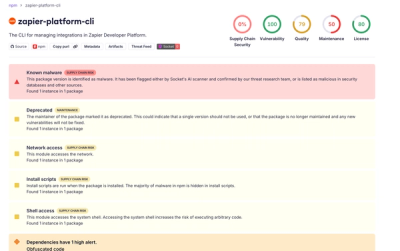Table of Contents
About
on_rails is a Railway-Oriented programming library for Python. It is designed to help developers write code that
is both easier to read and more resilient to errors. Railway-Oriented programming is a pattern that is similar to
functional programming, but with a focus on handling errors in a more elegant way.
Railway Oriented
The Railway Oriented Programming (ROP) pattern separates the pure functional domain logic from the side effects, by
representing them as a sequence of functions that return an Either type, representing either a successful Result
or an error. This allows for better composition and testing of functions, as well as improving the code's **
maintainability** and readability.
It also facilitates the handling of errors, as the error handling logic is separated from the main logic, making it
easier to reason about and handle errors in a consistent and predictable manner. Overall, ROP can lead to more robust
and reliable software systems.
Error Handling
In functional programming, it is not always appropriate to use traditional try-except blocks because they can lead to
code that is difficult to read, understand, and maintain.
on_rails supports functional error handling. The goal of this library is to make error handling more explicit,
composable, and testable. By using this library, developers can write code that is more robust, maintainable, and
expressive.
Motivation
The motivation behind this library is the desire to write code that is more reliable, easier to understand, and less
prone to errors. In many cases, functional programming languages provide built-in abstractions for chaining functions
and handling errors. However, for languages that do not have built-in support, libraries like this can provide a useful
alternative.
What problems are solved?
Railway Oriented Programming (ROP) solves several common problems in software development, such as:
-
Handling errors: By using an Either (Result) type, ROP makes it easy to represent and handle errors in a
consistent and predictable manner, avoiding errors being thrown and allowing for error handling logic to be separated
from the main logic.
-
Composition: ROP separates the pure functional domain logic from the side effects, such as I/O, by representing
them as a sequence of functions. This makes it easy to compose and chain functions together, enabling better code
reuse and maintainability.
-
Readability: The separation of pure functional domain logic from the side effects makes the code more readable and
understandable, as it makes it clear what each function does and how they relate to each other.
-
Testing: The pure functional domain logic can be easily tested, as it does not depend on any external state or
side effects. This simplifies testing and ensures that the code is correct.
Overall, ROP provides a structured approach to software development that makes it easier to handle errors, compose
functions, and test code, leading to more robust and reliable software systems.
Developers can spend less time debugging and more time writing code that adds value to their organization. Additionally,
by using functional programming concepts, developers can write code that is easier to reason about and understand, which
can lead to faster development cycles and better quality code.
Getting Started
Use pip to install package:
pip install on_rails --upgrade
Usage
Sample 1
from on_rails import Result, def_result
@def_result()
def get_number() -> Result:
number = int(input("Enter number: "))
return Result.ok(number)
get_number()
.on_success(lambda value: print(f"Number is valid: {value}"))
.on_fail(lambda prev: print(prev.detail))
Within the get_number function, the user is prompted to enter an integer number. If the user enters a valid integer,
the number is returned as a successful result using Result.ok(), otherwise, an error message is returned as a failed
result.
When the number is not valid, that is, it cannot be converted to int, an exception is raised. Thanks to
the def_result decorator, all exceptions are handled and the error details are saved in the Result detail.
The get_number() function is then called and its result is chained with two methods: on_success()
and on_fail(). If the get_number() function returns a successful result, the lambda function passed
to on_success() is executed, which prints the valid number entered by the user. If the get_number() function returns
a failed result, the lambda function passed to on_fail() is executed, which prints the error message.
Sample output for valid number:
Enter number: 5
Number is valid: 5
Sample output for invalid number:
Enter number: a
Title: An exception occurred
Message: invalid literal for int() with base 10: 'a'
Code: 500
Exception: invalid literal for int() with base 10: 'a'
Stack trace: ...
Sample 2:
from on_rails import Result, def_result
from on_rails.ResultDetails.Errors import ValidationError
@def_result()
def divide_numbers(a: int, b: int):
if b == 0:
return Result.fail(ValidationError(message="Cannot divide by zero"))
return Result.ok(a / b)
result = divide_numbers(10, 0)
if result.success:
print(f"Operation was successful: {result.value}")
else:
print("Operation failed:")
if result.detail.is_instance_of(ValidationError):
print("Ooo! This is a validation error!")
print(result.detail)
For better error management, you can also specify the error type.
You can use the implemented error types or
implement your own error type.
Sample 3: Custom Error Detail
from typing import Optional
from on_rails import Result, def_result, ErrorDetail
class CustomErrorDetail(ErrorDetail):
custom_field: str = "custom field!"
def __init__(self, message: Optional[str] = None):
super().__init__(title="This is my custom detail", message=message)
self.code = 600
def __str__(self):
error_details = super().__str__()
error_details += f"Custom Field: {self.custom_field}"
return error_details
@def_result()
def divide_numbers(a: int, b: int):
if b == 0:
return Result.fail(CustomErrorDetail(message="Cannot divide by zero"))
return Result.ok(a / b)
Sample 4: Retry Operations
from on_rails.ResultDetails.Success import CreatedDetail
from on_rails import Result, def_result
import requests
@def_result()
def create_data(url: str, data: dict[str, str]) -> Result:
response = requests.post(url, data=data, timeout=2000)
response.raise_for_status()
detail = CreatedDetail() if response.status_code == 201 else None
return Result.ok(response.json(), detail)
def fake_operation():
return Result.ok()
fake_operation().on_success(lambda: create_data(url, data), num_of_try=5)
In the example above, if the request goes wrong, an exception will be raised. By setting num_of_try, you can
specify how many times the operation should be repeated in case of an error.
Sample 5: Async Decorator
By default, all operations are executed synchronous. If you want to be asynchronous set is_async to true.
from on_rails import def_result
@def_result(is_async=True)
async def fetch(session, url):
async with session.get(url) as response:
return await response.text()
Note: In asymmetric mode, chain of functions is not supported.
CHANGELOG
Please see the CHANGELOG file.
Features
- Easy to use:
on_rails is designed to be simple and easy to use, with a minimal API and clear documentation.
- Compatibility with existing code:
on_rails can be easily added to existing codes without the need for major
refactoring. You can use decorator for wrap old functions or write new functions without worrying about
incompatibilities.
- Save any details you like: Thanks to
the ResultDetail class, you can store
various information about the output of the function. Also, by inheriting from this class, you can write new and
customized classes for your project.
- Special details for errors: With
the ErrorDetail class, you can
store specific details about errors. For example, this class supports stack trace in a built-in way.
- Support for common details by default:
In this link, you can see the different types
of details that are supported.
Roadmap
See the open issues for a list of proposed features (and known issues).
Support
Reach out to the maintainers at one of the following places:
FAQ
Do I need rewrite all the functions in a new way?
not necessarily. You can add this library and write new functions without changing the previous codes.
Also for old functions, you can use decorator. By using decorator, The output of the function is converted
to Result format. This way, your code is wrap in a try-except block to handle all exceptions.
How to manage all function exceptions?
By using decorator, your code is wrap in a try-except block and the final output is converted to Result. In this way,
all exceptions are handled.
Project assistance
If you want to say thank you or/and support active development of on_rails:
- Add a GitHub Star to the project.
- Write interesting articles about the project on Dev.to, Medium or your
personal blog.
Together, we can make on_rails better!
Contributing
First off, thanks for taking the time to contribute! Contributions are what make the free/open-source community such an
amazing place to learn, inspire, and create. Any contributions you make will benefit everybody else and are greatly
appreciated.
Please read our contribution guidelines, and thank
you for being involved!
Please do not forget that this project uses conventional commits, so please follow the specification in your commit messages. You can see valid types from this file.
Authors & contributors
The original setup of this repository is by Payadel.
For a full list of all authors and contributors,
see the contributors page.
Security
on_rails follows good practices of security, but 100% security cannot be assured. on_rails is provided "as is"
without any warranty.
For more information and to report security issues, please refer to
our security documentation.
License
This project is licensed under the GPLv3.
See LICENSE for more information.









